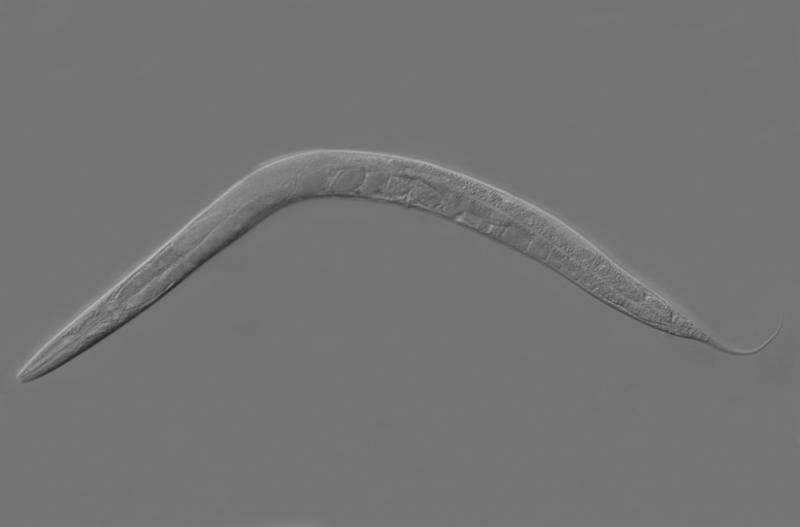Tiny worms may offer new clues about why it's so hard to quit smoking

Researchers at the University of Michigan Life Sciences Institute found that a previously dismissed genetic mechanism may contribute to nicotine dependence, and to the withdrawal effects that can make quitting smoking so difficult.
Scientists in the lab of Shawn Xu examined withdrawal responses in the millimeter-long roundworms Caenorhabditis elegans, which get hooked on nicotine just like humans.
In the findings, scheduled to be published Nov. 7 in Cell Reports, the researchers identified specific genes and microRNA that play an essential role in how the roundworms develop nicotine dependence and withdrawal responses—clues that may carry over to the mammalian realm.
The study took a fresh look at a previously dismissed biological mechanism. Most research in the field has focused on how proteins called nicotine acetylcholine receptors contribute to dependence.
Xu and his colleagues focused on an earlier step in the genetic coding process and discovered that a series of genes were involved in a process that ultimately increased the production of the nicotine receptor proteins, with microRNAs—a class of small RNA molecules that help fine-tune gene expression—playing a pivotal role.
"We're seeing a clear link between nicotine, microRNA, the receptor proteins, and nicotine-dependent behavior," said Jianke Gong, a researcher in Xu's lab and one of the lead authors on the study.
This mechanism had been dismissed as unimportant to nicotine dependence. However, Xu pointed out, those conclusions were made decades ago, using less sophisticated techniques.
Xu's lab previously demonstrated that the worms exhibit behavioral responses to nicotine similar to what mammals experience, and that some of the genes involved in nicotine dependence in worms are conserved in mammals—meaning the worms are a good genetic and behavioral model for studying nicotine dependence.
Xu hopes that this latest discovery in C. elegans will now lead other scientists to re-examine the role of these microRNAs in nicotine dependence in mammals, and ultimately lead to a better understanding of what causes the dependence.
"People believed this question had been settled," said Xu, a professor at the LSI and in the Department of Molecular and Integrative Physiology at the U-M Medical School. "But we have better tools now. We, as a field, need to take another look at this mechanism in nicotine addiction."
More information: "MicroRNA regulation of nAChR expression and nicotine-dependent behavior in C. Elegans," Cell Reports (2017). DOI: 10.1016/j.celrep.2017.10.043
















